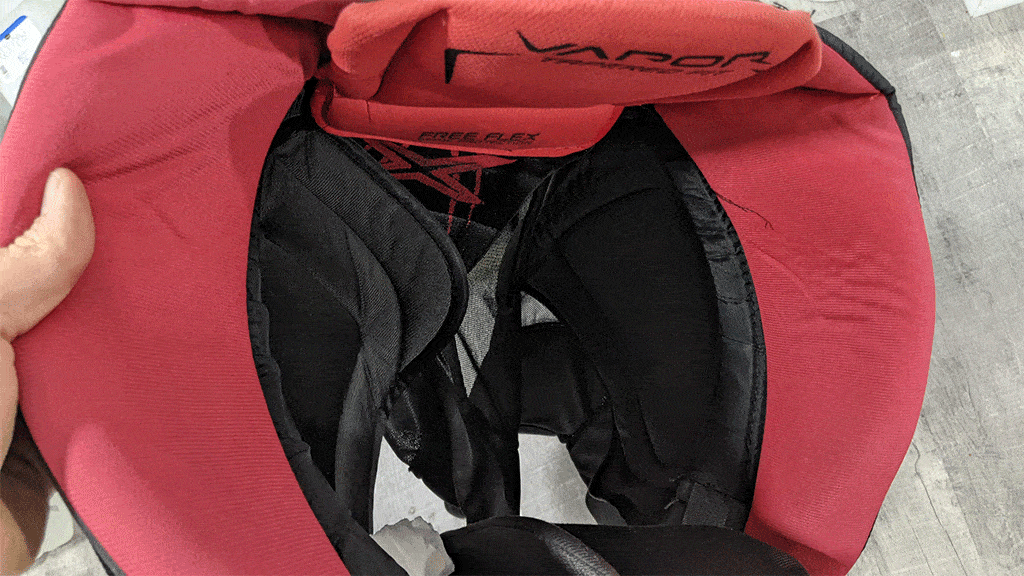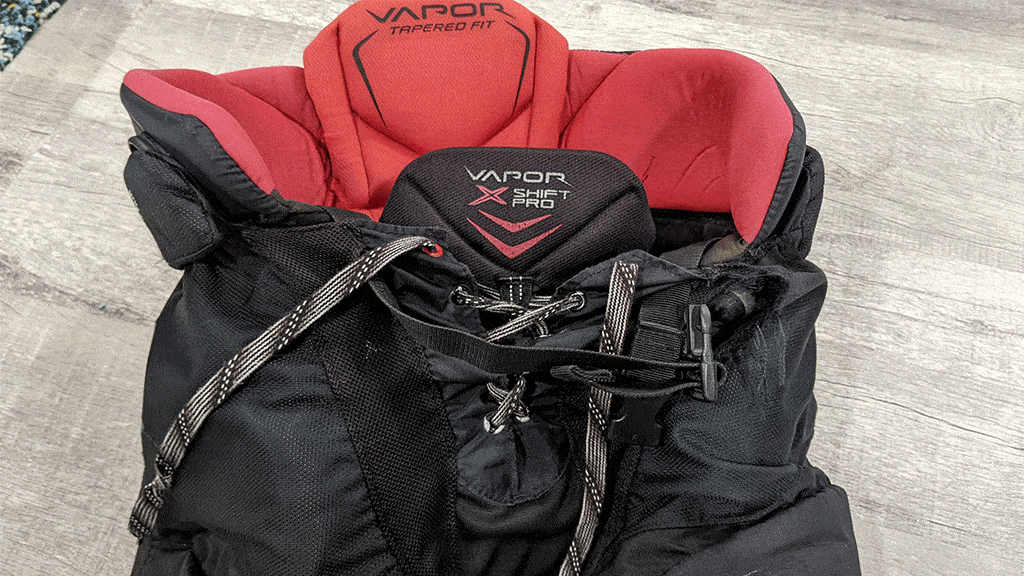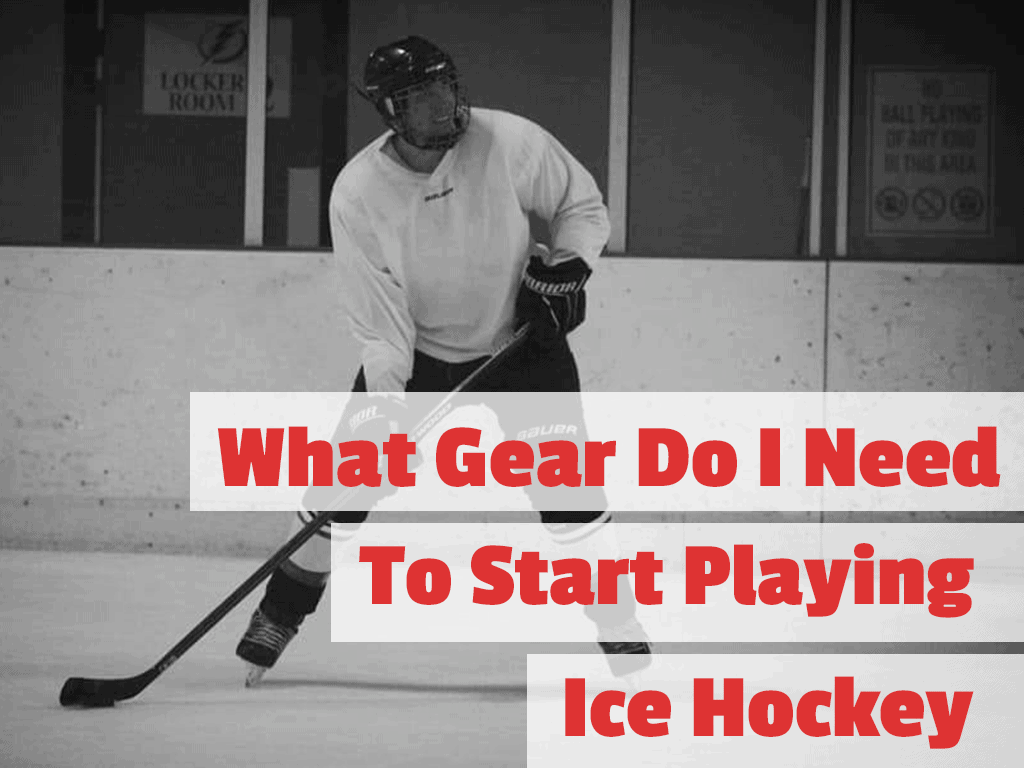
Hockey Pants. They are actually more like hockey shorts when you really look at them. How do they work? Where is the padding in them and how do you keep them on your body?
Properly fitted hockey pants protect your hips, tailbone, and the front of your thighs from pucks, sticks, and falls on the ice. Surprisingly there is very little padding on your glutes and the backs of your thighs. Hockey pants stay on your body with a lace and strap that you can tighten around your waist. Suspenders are not always needed.
We will discuss hockey pants, sometimes known as breezers, in more detail below. Do more expensive hockey pants mean more padding? Is the single strap along the wait enough to hold up your pants? Keep skating and you’ll find out
What Do Hockey Pants Do?
Hockey pants are there to protect your lower body from the dangers of the game. Specifically your hips, lower back, tailbone, and the front of your thighs.
The name hockey pants can be a little confusing though because they aren’t actually pants. This piece of protective equipment covers your waist, your privates, and your thighs, stopping at the knees.
Despite the name, hockey pants do not protect your shins. That is what shin guards are for.
Something that is notable is that hockey pants do not protect the back of your thighs and glute area very well.

Where is The Padding In Hockey Pants?
The padding in hockey pants is in the tailbone and upper back area, the hips, and the front of your thighs.
There is very little padding around your glutes and the back of your thighs.
The tailbone/upper back padding is very thick and where a majority of the padding is placed. The hip padding is rather large and wraps around the pants to the front and sits right below your rib cage on both sides of your torso.
There is not a lot of padding from your hockey plants (or even your chest protector) when it comes to your front abdomen area.
There are hard pads that cover the front of your thighs. These are here to protect your legs from pucks, other players, and their sticks. These are the hardest pads that you will find in your hockey pants. Most of the other padding in your pants is foam made to absorb impacts differently than these types of pads.
The most padding on your hockey pants can be found on the tailbone protector. This is the large piece of padding in the rear that sticks up higher than the waistline of your pants. This padding runs down the back of your pants also offering protection if you were to fall.
The padding however does not cover your entire glute area. It really only covers the center. I’m not sure why more of your “cheek areas” are not covered.

When I first started playing hockey I would constantly fall on my ass, and now that I type that, I realize not much has changed.
But There was a time when I kept falling on the same cheek, multiple times every single week and I had such a deep bruise it was excruciating to even lift my leg to put my socks on.
My first pair of hockey pants were the bottom of the barrel, a $60 pair of Bauers. They did fine blocking pucks but did not provide adequate protection for my butt!
I have since upgraded to a more mid-level pant and feel slightly more protected but still, I feel like there should be more padding in your hockey pants in the butt area.
Do More Expensive Hockey Pants Protect You More?
Is it worth buying more expensive hockey pants? I would say yes to an extent. Mid-level hockey pants are more than adequate for adult league hockey.
Hockey pants will range in price from around $60 to around $230. As you buy more expensive pants you will notice that the pants are made with higher-quality protective foam and padding which gives you more protection while also being less bulky.
For example, a cheap pair of hockey pants like the Bauer X Pants uses PE and MD foams. These materials are not designed for hockey situations. PE foam is often used in packaging and MD foam is often used to seal things and make them weather-tight. These materials don’t exactly scream protection for the human body.
As you get into more expensive pants you will begin to find molded PE foams that fit better to your body as well as more high-density foams and plastics which deal with impacts from the puck and the ice better.
But more money doesn’t always mean more protection everywhere. More expensive hockey pants will be made of better materials but even the most expensive pants will still have weak spots. You will still lack protection on your hamstrings, your abdomen and your outside glutes.

How Should Hockey Pants Fit To Provide The Most Protection?
If you are an adult you need to make sure that you are purchasing senior-sized pants. Your hockey pants should fit snug on your waist so that they do not fall down during a game. If your pants aren’t on you then they can’t protect you.
You are also looking for comfort in your hockey pants. You don’t want them to be too large or small and restrict motion in any kind of way.
You want the pants to come to an end just above your kneecaps. This will allow for proper movement with adequate protection. If your pants are too large and they hang down too much you will notice that they will bump into your shin guards and cause an issue with your skating.
If your pants are too small then they probably won’t be comfortable at all and they will also leave even more protection gaps.
Bauer Hockey Pant Sizing
| Size | Waist (in.) | Height |
| Small | 30”-34” | 5’5” – 5’9” |
| Medium | 32”-36” | 5’7” – 5’11” |
| Large | 34”- 38” | 5’9” – 6’1” |
| X-Large | 36”- 40” | 5’11” – 6’3” |
| XX-Large | 40”+ | 6’1” + |
CCM Hockey Pant Sizing
| Size | Waist (in.) | Height |
| Small | 28”-32” | 5’4” – 5’7” |
| Medium | 32”-36” | 5’7” – 5’10” |
| Large | 34”-38” | 5’10” – 6’2” |
| X-Large | 38”-42” | 6’0” – 6’2” |
| XX-Large | 42”+ | 6’2” + |
Easton Hockey Pant Sizing
| Size | Waist (in.) | Height |
| X-Small | 28”-30” | 5’3” – 5’4” |
| Small | 30”-32” | 5’5” – 5’7” |
| Medium | 32”-34” | 5’7” – 5’10” |
| Large | 34”- 36” | 5’10” – 6’2” |
| X-Large | 36”- 28” | 6’0” – 6’2” |
True Hockey Pant Sizing
| Size | Waist (in.) | Height |
| Small | 30”-34” | 5’5” – 5’9” |
| Medium | 32”-36” | 5’7” – 5’11” |
| Large | 34”-38” | 5’9” – 6’1” |
| X-Large | 36”- 40” | 5’11” – 6’3” |
Warrior Hockey Pant Sizing
| Size | Waist (in.) | Height |
| Small | 30”-32” | 5’4” – 5’9” |
| Medium | 32”-34” | 5’6” – 6’0” |
| Medium Tall | 32”-34” | 5’9” – 6’2” |
| Large | 34”-36” | 5’9” – 6’2” |
| Large Tall | 34”-36” | 6’0”+ |
| X-Large | 36”- 38” | 6’0”+ |
| XX-Large | 38”- 40” | 6’2”+ |
Other FAQs About Hockey Pants
How Do Hockey Pants Stay Up?
Hockey pants use an adjustable waistband and a skate lace which you can tie to hold up your hockey pants.
Hockey pants are loose-fitting around your thighs but stay secure to your waist. The adjustable strap is often times a clip that you can undo after every game. The waistbands are often tucked underneath the protective padding so that they can not be seen.

Some players use suspenders to hold up their hockey pants. Hockey suspenders work just like regular pant suspenders by attaching to your pants and lopping around your shoulders to keep your pants secure and in place.
However, suspenders are not 100% necessary. It is a personal preference and some players just prefer to use suspenders.
One thing is for sure though. Properly fitted and placed hockey pants will protect you better than ill fitting pants.
What Is A Hockey Girdle And Is It Different From Hockey Pants?
Think of a hockey girdle as just the inside pads of your hockey pants.
Girdles are more form fitting and stay snug to your body more than hockey pants do. Hockey girdles will also need a pant shell in order for you to play with them.
What Is A Hockey Pant Shell?
A shell is the outside protective casing of your hockey pants. Hockey shells are usually made of nylon and they have waist straps as well as skate lace holes for your to tighten up your pants even more.

